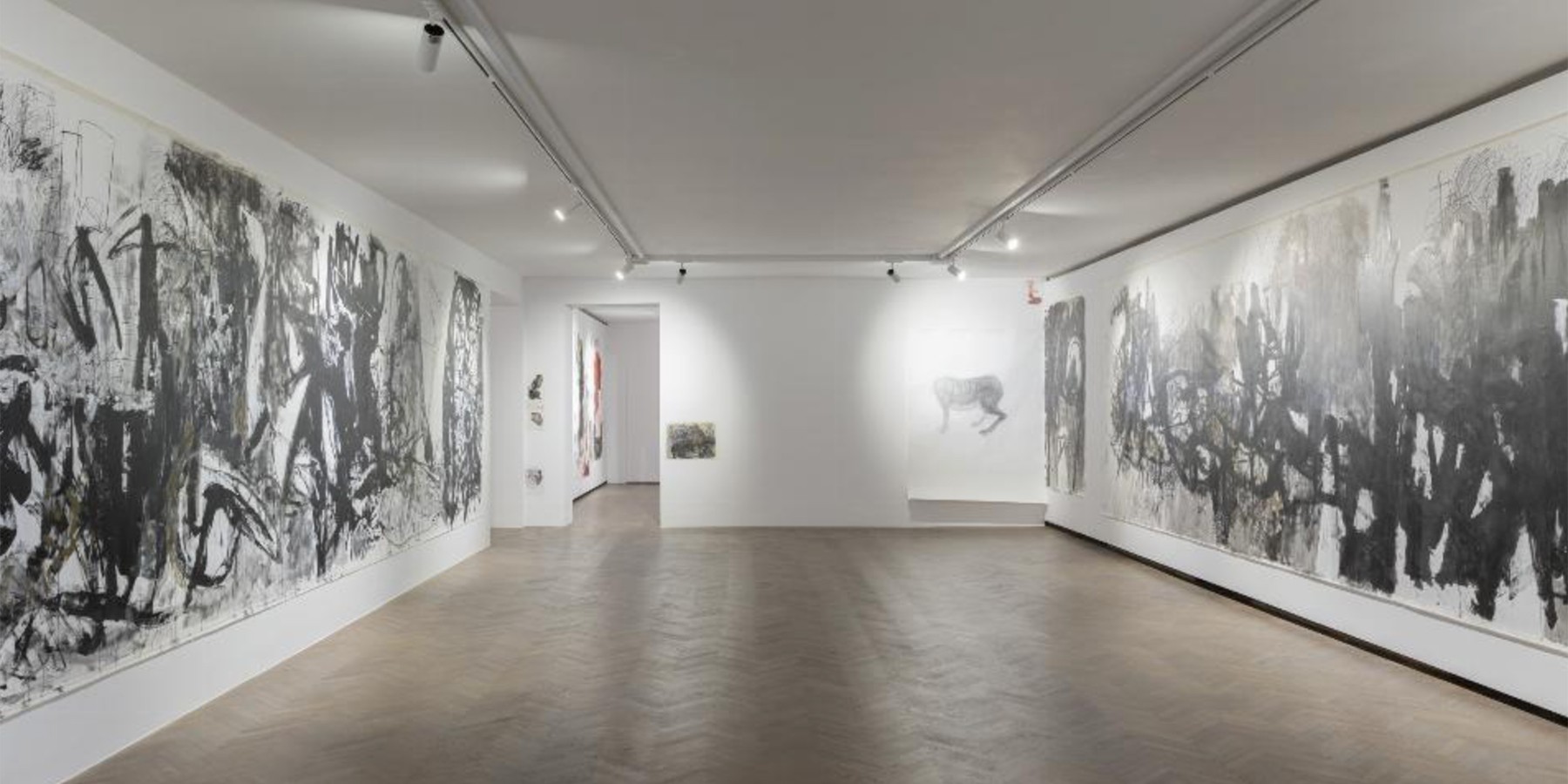Wilhelm Sasnal
untitled (based on Don’t Be Surprised When They Come To Burn Your House Down)
Wilhelm Sasnal
untitled (based on Don’t Be Surprised When They Come To Burn Your House Down), 2006, 6 drawings, ink on paper, A3
Collection II of the Arsenal Gallery in Białystok. Works purchased by the Podlaskie Association for the Promotion of Fine Arts

The series of drawings by Wilhelm Sasnal was created on the commission of the quarterly “Krytyka Polityczna” as an addition to Paweł Demirski’s play, Don’t Be Surprised When They Come To Burn Your House Down, which was published in that magazine. The play was inspired by the tragic events of 2005 in the Indesit household appliances plant in the city of Łódź. A 21-year-old worker was killed, crushed by a hydraulic stamping machine from which a security sensor had been taken off so as to increase productivity. The main heroine in Demirski’s play is the man’s wife, who decides to fight for the truth. The author says, “No name or surname is mentioned in the play. We are not creating a scene of the crime inspection, but theatre.” The piece, which refers to Władysław Broniewski’s poem Bagnet na broń [Fixed Bayonets!], is an open criticism of the rules governing the Polish labour market dictated by capitalism: exploitation of workers, low remuneration and scandalous work conditions in many factories.
Social engagement is not a factor conditioning Sasnal’s explorations. The artist speaks about there being a border between painting and the cartoon-like drawings which comment on current political events, underlining, at the same, that his opinions are very much in line with the programme of “Krytyka Polityczna”.
It would be difficult to call the works accompanying Demirski’s play illustrations. They do not so much illustrate the performance as evoke a series of associations, opening up possible interpretations of the piece. The concise drawings, which refer to the site of the tragedy, the figure of the director, or the uniforms worn by the workers, which – as the two main characters say – make them “transparent”, serve as the punch lines to the key motifs in the drama. The ascetic formal language and the reduction of the elements of the representation (such as faceless characters) serve as means of showing the impossibility of depicting the tragedy on which the play is based and, on the other hand, they help sketch an apt picture of a factory (corporation) as an institution organized on the basis of totalitarian principles leading to the annihilation of the individual.
Izabela Kopania

PLAN YOUR VISIT
Opening times:
Thuesday – Sunday
10:00-18:00
Last admission
to exhibition is at:
17.30